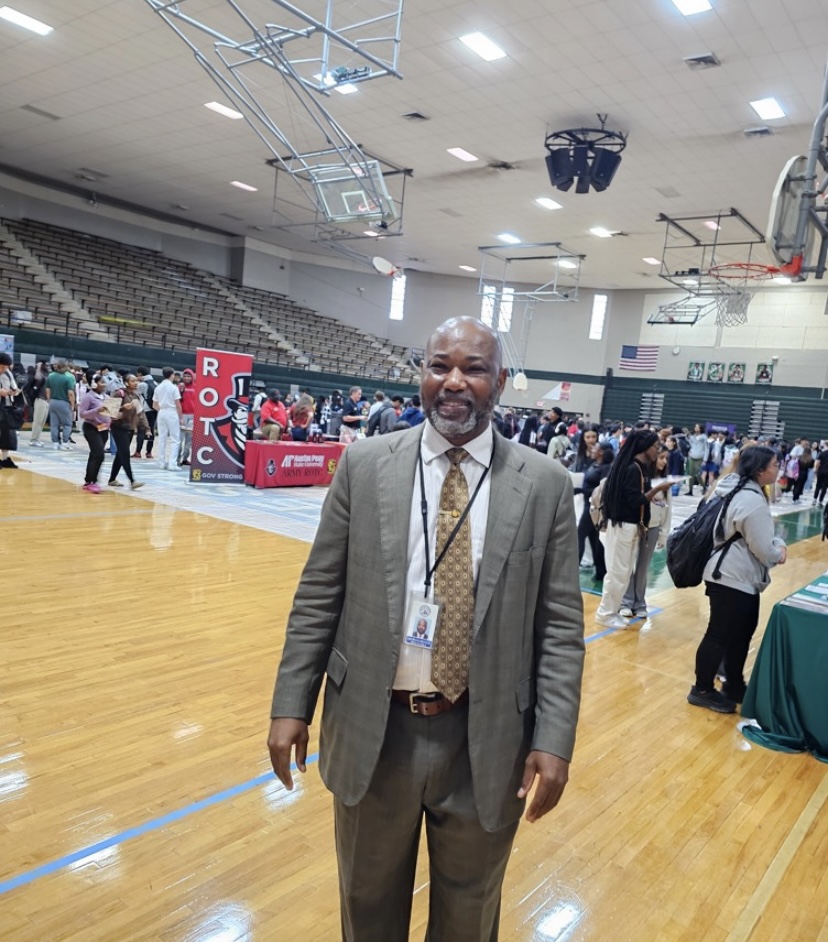
MIT, WashU, Brown, UTK, UM, UNC, USC, TCU; these abbreviations haunt the Class of ‘24 as the college admissions season begins. It is now “crunch time” for high school seniors, as parents or teachers might put it. With regular decision deadlines typically lying in January and early decision (ED) or early action (EA) programs often having much sooner deadlines, seniors are left with only a few months to strengthen their applications for submission.
Many students apply to multiple colleges — some applying to 6 or more — to get better chances of admission into any of their top colleges, many of which have terrifyingly low admission rates. Whether it be an Ivy League, local college or anything in between, seniors have to lay out their lives and accomplishments on their application to get into their desired college.
“[My] dream college is MIT, [a] far reach,” Angel Salazar (12) said. “I’m also planning to apply to Georgia Tech, CalTech, U of M as a safety school [and] Notre Dame.”
The normal application is not the only avenue students can go down to apply to a college. Highly-desired colleges often have early decision or early action programs, which require the student to submit an application much earlier than they would for regular decision. The advantage students gain from opting for ED or EA is that these programs often have greatly increased admission rates than the regular decision pool. Early decision typically has the highest admission rate out of the application choices, but it is binding. If one is accepted to a college through early decision, they must contractually attend that university. Early action offers the increased admission rates but is non-binding, making it appealing for many students.
“I think [EDs] are definitely [beneficial],” Michael Wang (12) said. “I think it’s a great chance to really put yourself apart from other kids; it boosts your chances hugely … especially if you are more realistic with yourself and know where you want to go.”
Not only is ED binding, but it prevents students from knowing the amount of financial aid they will receive before admission. Finances are one of the biggest deciding factors for students searching for potential universities to attend. For example, schools in California are typically quite expensive so many students choose not to apply to them. Even though many universities have begun to be more empathetic towards students’ financial situations, ED is nevertheless off-putting for many students for this reason.
“It’s a huge problem [with ED],” Wang said. “[However], I don’t think financial aid would be that crazy different between regular and ED … but if money is a problem, ED is not required.”
Ultimately, whether a student decides to go ED or RD, they still need to submit an application. This application typically includes the student’s main and additional essays, their high school transcript, letters of recommendation, their extracurriculars or other responsibilities and their test scores if they choose to submit them. Furthermore, there are many different applications; there is the standard CommonApp, but there are also other programs like Questbridge or the Coalition application. Some schools, like MIT, have their own application.
“[For the Questbridge application], first you have to apply and become a finalist,” Salazar said. “Once you become a finalist, then you can rank 15 of their college partners … then on Dec. 1, they tell you if you got matched. If you get [matched], it is binding.”
One of the most contentious points of every application is the primary essay. Students must write an essay so that universities can fully grasp the student’s life and values for admission. One essay format that has become increasingly more common is the “trauma” essay in which a student writes about a traumatic event in their lives that they overcame. Students writing this type of essay can often present a poignant story of their personal growth through their trauma, making it very appealing to use. While this type of essay is often genuine, it is also frequently seen by people as a sort of “get-into-college-free card” for its emotional nature. Furthermore, it can sometimes make some people feel that their lives are worth less in the eyes of colleges because they don’t have certain trauma while another student does.
“I think you can see that sometimes it’s just fake,” Wang said. “If you come off as fake, I feel that it’s way worse than writing a boring essay. It’s just hard to put your feelings into words.”
Overall, the college application process can be daunting and stressful. Thankfully, it is one of the last steps before a high schooler can graduate into a new stage of academic life that many are exuberantly excited for. Wang had this advice to share to current and rising seniors regarding college applications:
“I think the big thing is to be honest on the application,” Wang said. “A lot of times people try to hype themselves up or write something big, but it just comes off disingenuous. Write what you feel and [who] you are as a person. You’ve been working 12 years in school, and that accumulated to something.ut that down.”
Salazar, like Wang, had this advice to share:
“As soon as an application opens, they should get recommendation letters, start drafting their essays [and] get all the information they need,” Salazar said. “Get anything that’s required as soon as possible.”


































